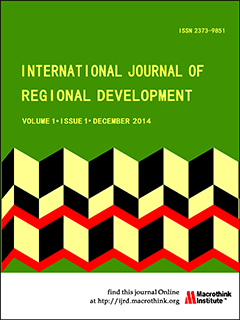The Regional Uneven Development and the State Intervention to Reshape the Spatial Hierarchy
DOI:
https://doi.org/10.5296/ijrd.v8i2.18231Abstract
The central question in this study concerns the way in which the state intervention is strong enough to reverse the tide of regional uneven development that has been intentionally created by the state. To answer the question, we conduct a case study of the Innovation Cities in South Korea. We use the K-means Cluster Analysis and a Two-way Analysis of Variance with well-defined three indices on regional economic competitiveness. The results reveal that the development of Innovation Cities does not have a desirable impact on converging the regional disparity between core and periphery regions. At best, the regional gap has not widened. The outcomes also imply that the trickle-down effects have not been observed during the time-period of study. The findings suggest that policymakers carefully consider diverse full-factors toward periphery regions with consideration of the regional heterogeneity rather than focusing on the homogeneous approach.
Downloads
Published
How to Cite
Issue
Section
License
Copyright (c) 2024 International Journal of Regional Development

This work is licensed under a Creative Commons Attribution 4.0 International License.


